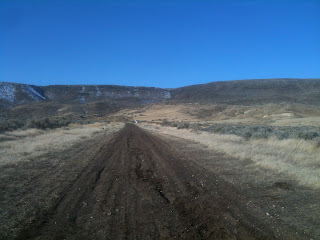
Welcome to my new office. As you might expect, lots of knobs, dials and switches to play with. The trick of course is playing with them in the right order.
The first aircraft checklist
ever was for the B-17 Flying Fortress, and ever since each aircraft has its
own checklist provided by the manufacturer. Operators (like MAF) may modify this, as long as all of the
essential items are included.
Pilots tend to forget things if they don't use a checklist, and many aircraft accidents have occurred because checklist items were missed.
 |
| Yoke Checklist |
MAF here in the US use a combination of up to 5 checklists. There is a tan coloured card for the preflight inspection, then a 'before entry' checklist attached to the pilot's door. Once seated there is a 'yoke' checklist, which as you can see on the photo above is attached to the yoke/control column.
On the MAF yoke checklist there are procedures for BEFORE START, AFTER START, and then there is a further
ELECTRIC CHECKLIST to refer to before Take-Off.
The
ELECTRIC CHECKLIST is a small box mounted on top of the cockpit so it is in the pilot's eyeline. It is not connected to anything except the aircraft power, and that is only so that some lights come on when all the switches are up (or down). The idea is that there are five clusters of items that need to be verified before take-off, and similarly another five (some the same) before landing. So it is simply just another checklist, but with the added satisfaction of being able to flick a switch when each cluster is complete, and then seeing a nice light come on when they are all done.
As a checklist this is something completely new to me, although I do remember a similar system in the AIMAIR aircraft. It does seem to work quite well as an aide-memoire, although I keep forgetting to actually flip the switches to get the lights to come on once I've done all the items.
 |
| Electric Checklist |
Whoever came up with this idea was obviously quite forgetful, liked having something to fiddle with, and enjoyed seeing little flashing lights. It was obviously a pilot and my wife will tell you it was probably a man.
 Truly an amazing place. It has been a real priviledge to fly here, and it has nearly come to an end. I have one more flight to complete tomorrow in the Nampa area, and my flight training will be complete. I have a few days in the simulator next week to polish up some instrument flying, but otherwise my training here in the US will be complete. I hope you have enjoyed following my adventures. Stay tuned for a few further photos next week, and then next year you'll see some more flying, this time in AFRICA!
Truly an amazing place. It has been a real priviledge to fly here, and it has nearly come to an end. I have one more flight to complete tomorrow in the Nampa area, and my flight training will be complete. I have a few days in the simulator next week to polish up some instrument flying, but otherwise my training here in the US will be complete. I hope you have enjoyed following my adventures. Stay tuned for a few further photos next week, and then next year you'll see some more flying, this time in AFRICA!


















